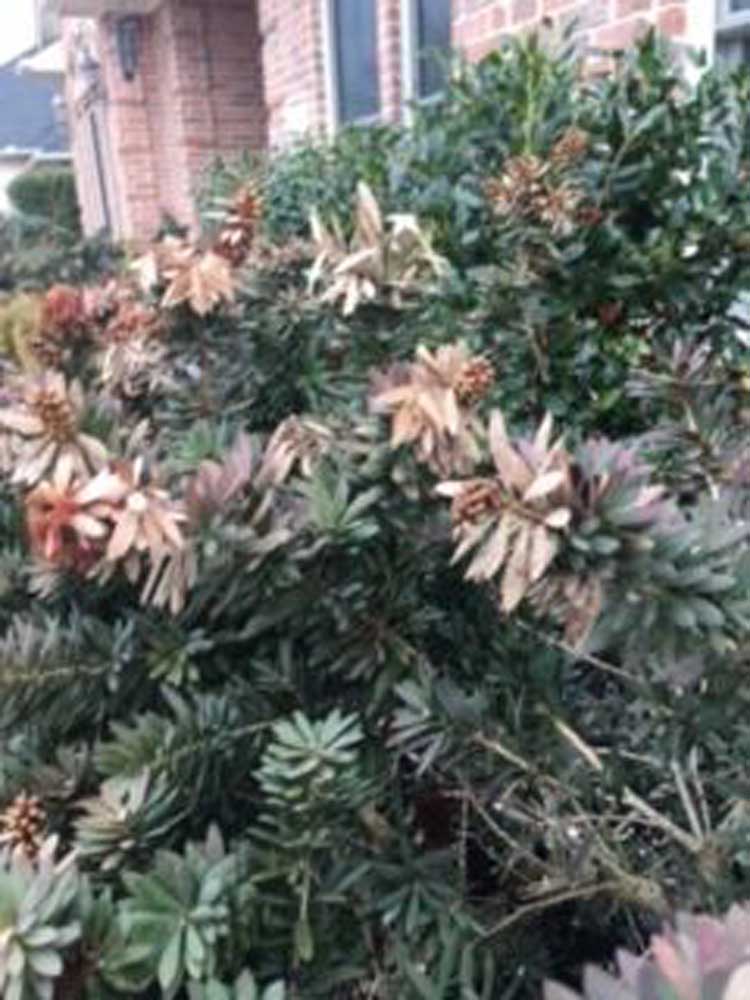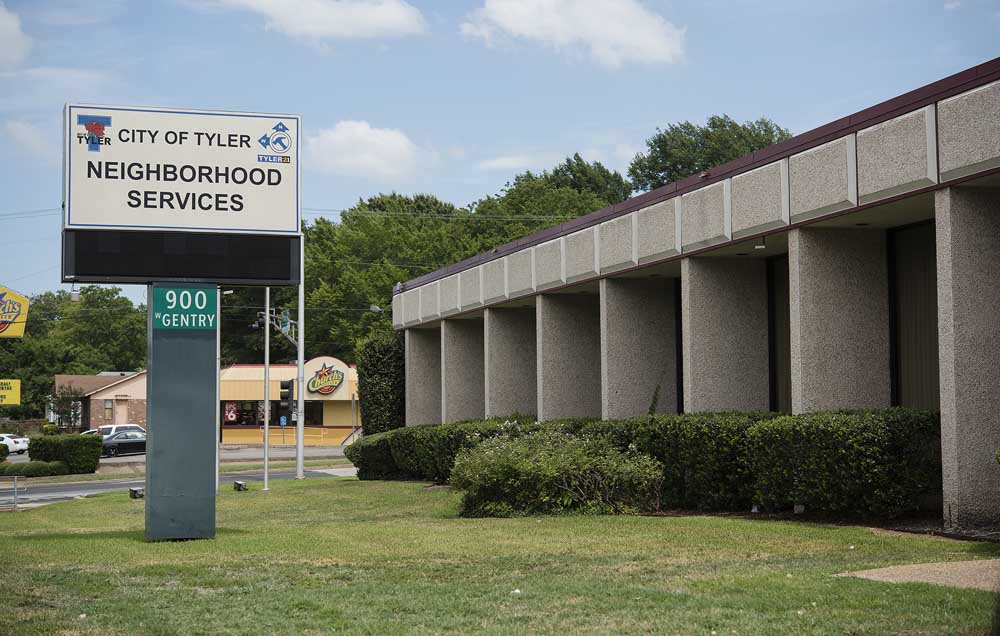Neil Sperry: Gardener’s Mailbag
Published 7:54 pm Saturday, February 6, 2021

- Bottlebrush with freeze damage.
Dear Neil: When should I remove the freeze-damaged parts of a bottlebrush plant and a foxtail fern?
Answer: You can always remove dead tissue from a plant, so anytime you are sure that a branch or twig has died, you can trim it away. With several weeks of potentially cold weather ahead in February, there may be more freeze damage to come, so you might want to hold off just a bit before you make all your decisions.
Dear Neil: I have approximately 800 square feet of lawn that was St. Augustine, but that now has bermudagrass encroaching. I always thought that St. Augustine was the more dominant grass and that it would prevail. I am not aware of any selective chemicals that will kill the bermudagrass and let the St. Augustine grow. What are my options?
Answer: You need to determine why the St. Augustine is thinning. It may be due to chinch bugs. They attack St. Augustine but seldom bother bermuda at all. Or it could be that the lawn simply got too dry. Bermuda survives drought better than St. Augustine. St. Augustine can also be weakened greatly by take all root rot in the spring and gray leaf spot in the summer. I really can’t diagnose the problem and its solution without more information. You might do a little homework on each of those.
Dear Neil: We live in an area with sandy soil and we would like to plant azaleas. What kind of bed preparation will they require?
Answer: Azaleas must have acidic soil (low soil pH). Soils in the Piney Woods area of East Texas fit that description, as will a few areas farther west. A soil test will tell you for sure. Alkaline soils such as Texans encounter from Central Texas and westward, notably along I-35 and to the west, will require extensive bed preparation. In sandy East Texas soils you would merely need to add 4 or 5 inches of organic matter (peat moss, compost, etc.) into the top foot of soil and plant your azaleas. In the alkaline areas, however, you will need to remove 10 inches of soil and replace it with 18 or 20 inches of pure organic matter (equal amounts of sphagnum peat, for its very low pH, and finely ground pine bark mulch). Such a mounded bed would need to be out away from the house so it didn’t block weep holes in stone and brick, but the positive side is that it would ensure perfect drainage. Azaleas need morning sun and afternoon shade. Let your Texas Certified Nursery Professional recommend spacing for the variety you buy.
Dear Neil: Do I have to worry about fig ivy doing any damage to my masonry wall? Does it damage the mortar?
Answer: No. The hugging vines like fig ivy, English ivy and Boston ivy (curiously, all unrelated) do nothing to pull brick, stone or mortar apart. The only times I’ve ever seen them do anything I’d categorize as “harmful” were when they trapped debris behind their stems and caused brown stains on limestone walls or light-colored bricks. I’ve personally had a difficult time removing the cup-like appendages that allow Boston ivy to hold onto siding and window screens, so don’t allow the vines to grow beyond their masonry boundaries.
Dear Neil: Is dwarf mondograss a good groundcover for our backyard? It’s very pretty, but are there any downsides?
Answer: Yes! While it is a beautiful, low-growing groundcover, dwarf mondograss is ultimately slow-growing. It also is susceptible to a fast-moving, soil-borne crown rot fungus that can destroy all or part of a planting in a hurry. Therefore, it requires perfect drainage. For those reasons, and having learned those lessons the hard way, I do grow dwarf mondograss as a groundcover, but I use it in small areas (2 or 3 feet on a side), and I’m always sure to plant it where drainage is perfect. For larger spaces I use regular mondograss as my groundcover. It’s ideal.
Dear Neil: What type of fertilizer is best for St. Augustine? And when should it be applied? I have pecans in my landscape and I’d like to keep them productive if that affects your answer.
Answer: It doesn’t impact the answer at all. Pecans benefit from the same nutrients as your turfgrass does. You would want an accurate soil test from a bona fide soil testing laboratory such as the one at Texas A&M. It will probably show that you need to add a high-nitrogen or all-nitrogen food, and that upwards of half of that nitrogen should be in slow-release form. I fertilize my St. Augustine in early April, early June and early September. That is less often than I feed areas where I have bermuda. St. Augustine is affected by gray leaf spot, the hot-weather fungal leaf spot that is accelerated by applications of nitrogen in the heat of the summer.
Dear Neil: I’ve heard you describe how to salvage a crape myrtle that has been topped. Could you please repeat it?
Answer: I’d be proud to do so. Topping is just so senseless. Always. If you find yourself looking at a crape myrtle that has been butchered by someone who didn’t understand the mistake of their ways, the quickest way to a lovely crape myrtle is to cut it off flush with the ground and let it start over (really!). It will send up 20 or 30 shoots. Select 10 or 12 straight ones as potential new trunks and let them grow for the first summer. In September, narrow the choices down to the best looking 5-7 and remove all the rest flush with the ground. By the second summer you’ll be able to make your final selection of the 3 or 5 trunks that you want to use as the trunks for your reconstituted tree and you can start nurturing it into a beautiful form. You’ll be amazed at how quickly it will bounce back!
Have a question you’d like Neil to consider? Mail it to him in care of this newspaper or e-mail him at mailbag@sperrygardens.com. Neil regrets that he cannot reply to questions individually.
Have a question you’d like Neil to consider? Mail it to him in care of this newspaper or e-mail him at mailbag@sperrygardens.com. Neil regrets that he cannot reply to questions individually.






